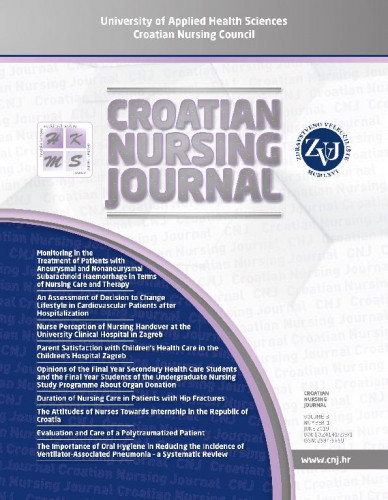Cerebrovascular diseases together with cardiovascular and malignant diseases are the most common diseases in the developed world, regardless of the gender. They are at the third place as the cause of mortality and first as the cause of disability. Subarachnoid haemorrhage is a condition of discharging blood from cerebral arteries into the subarachnoid space within the brain. Subarachnoid haemorrhage (SAH) has a number of etiological features, but when it comes to spontaneous subarachnoid haemorrhage, in 80% of the cases it is caused by the rupture of an intracranial aneurysm. Subarachnoid haemorrhage (SAH) can be spontaneous and traumatic (post-traumatic). Also, it could be primary (direct bleeding into the subarachnoid space) or secondary (parenchymal bleeding to the subarachnoid space of the brain). Cerebral aneurysms are a local expansion in the blood vessel wall usually at the bifurcation of the artery. If cerebral artery ruptures and blood enters the subarachnoid space, the patient can have a very strong headache at the back and front part of the head. Short term memory can be affected as well. The initial assessment of patients should include: an overview of the quantitative state of mind, pupil size and reaction to light, motor and sensory function, the presence of headaches, dysfunction of cranial nerve (ptosis of the eyelids, difficulty moving eyes in all directions) blurred vision, aphasia, other neurological deficits). Several serious complications often arise after a successful operative treatment of the subarachnoid haemorrhage and aneurysm. One such complication is cerebral vasospasm, and is present in 50 to 70% of the patients. Late complications include recurrent bleeding, brain edema, chronic hydrocephalus and as most important - brain infarction. The incidence of subarachnoid haemorrhage ranges from 10-15/100 000 inhabitants.; Subarahnoidna hemoragija stanje je izlijevanja krvi iz moždanih arterija u subarahnoidni prostor duž površine mozga. Subarahnoidna hemoragija (SAH) ima brojne etiološke mogućnosti, ali kada je riječ o spontanoj subarahnoidnoj hemoragiji, u 80 % slučajeva uzrok joj je ruptura intrakranijske aneurizme. Subarahnoidna hemoragija može biti spontana i traumatska (posttraumatska). Također, može biti primarna ili sekundarna. Inicijalna procjena bolesnika uključuje: pregled kvantitativnog stanja svijesti, veličinu zjenica i reakciju na svjetlost, motoričku i senzoričku funkciju, prisutnost glavobolje, disfunkciju kranijalnih živaca (ptoza kapaka, poteškoće pomicanja očiju u svim pravcima), zamagljen vid, afaziju, ostale neurološke deficite. Nekoliko ozbiljnih komplikacija često nastaje nakon uspješne operacije subarahnoidne hemoragije i aneurizme. Jedna je takva komplikacija cerebralni vazospazam, a javlja se u 50 do 70 % pacijenata. Odložene su komplikacije: recidivirajuće krvarenje, edem mozga, kronični hidrocefalus i kao najvažnija – infarkt mozga. U monitoriranju te ovisno o nastalim komplikacijama, ali i u svim situacijama, uloga medicinske sestre prvenstveno se ogleda u praćenju vitalnih parametara i stanja svijesti te u prepoznavanju trenutaka nastanka klinički relevantne neurodeteriorijacije. Ciljevi. Prikazati ukupan broj operiranih pacijenata s potvrđenom subarahnoidnom hemoragijom na Klinici za neurohirurgiju Kliničkog centra Univerziteta u Sarajevu u periodu od 1. siječnja 2013. do 31. prosinca 2014. Te prikazati: načine monitoriranja pacijenata od primitka u Kliniku do otpusta, stadije ishoda liječenja i indikatore kvalitete (ventilacijska pneumonija, intrahospitalne infekcije, dekubitusi) kod ispitivanog uzorka. Metode. Provedena je retrospektivna studija.
Sažetak

 Croatian nursing journal : 3,1(2019) / glavna urednica, editor in chief Snježana Čukljek.
Croatian nursing journal : 3,1(2019) / glavna urednica, editor in chief Snježana Čukljek.